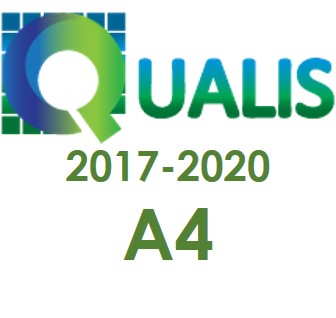Fonética e Fonologia: Perspectivas Complementares (Phonetics and Phonology: Complementary Perspectives)
DOI:
https://doi.org/10.22481/el.v3i1.1007Palavras-chave:
Fonologia, Fonética, Léxico, Contraste, Variação sonoraResumo
Este artigo avalia alguns aspectos das disciplinas denominadas fonética e fonologia. Inicialmente considera-se a visão dicotômica e separada das duas disciplinas. A seguir pondera-se sobre abordagens que integram a fonética e a fonologia como disciplinas análogas e complementares. As propostas teóricas da Fonologia de Uso (Bybee, 2001), da Teoria de Exemplares (Johnson, 1997) e algumas propostas teóricas de Pierrehumbert (2001) são avaliadas. Finalmente, consideram-se as conseqüências e desafios apresentados pela proposta de se integrar a fonética e a fonologia.
PALAVRAS-CHAVE: Fonologia. Fonética. Léxico. Contraste. Variação sonora.
ABSTRACT
This article evaluates some aspects of the disciplines called Phonetic and Phonology. Initially we considered the dichotomy and separated vision of the two disciplines. To follow we pondered on boardings that integrates phonetic and the phonology as analogous and complementary disciplines. The theoretical proposals of the Frequency phonology (Bybee, 2001), Theory of Units (Johnson, 1997) and the some theorical proposals of Pierrehumbert (2001) are evaluated. Finally, we considered the consequences and challenges of the phonetic and the phonology integration.
KEYWORDS: Phonetic. Phonology. Lexicon. Contrast. Sound variation.
Downloads
Referências
BYBEE, J. Phonological evidence for exemplar storage of multiword sequences. SSLA, n. 24, p. 215-221, 2002.
BYBEE, J. Phonology and Language Use. Cambridge Studies in Linguistics 94. Cambridge: Cambridge University Press, 2001.
BYBEE, J. Lexicalization of sound change and alternating environments. In: BROE, Michael B.; PIERREHUMBERT, Janet B. (Ed). Papers in Laboratory Phonology V: Acquisition and the Lexicon. Cambridge: Cambridge University Press, 2000. p. 250-268.
BYBEE, J. Morphology: A study of the relation between meaning and form. Typological Studies in Language, Amsterdam: John Benjamins, v. 9, 1985.
BYBEE, J.; HOOPER, P. (Ed). Frequency and the Emergence of Linguistic Structure. Typological Studies in Language, Amsterdam: John Benjamins, v. 45, 2001.
CRYSTAL, D. A Dictionary of Linguistics and Phonetics. Oxford: Blackwell, 1997.
DEMOLIN, D. The integration of phonetics and phonology. São Paulo: Universidade de São Paulo, 1979.
ECKERT, P. Linguistic Variation as Social Practice. Oxford: Blackwell, 2000.
FERGUSON, C. Diglossia. Word, v. 15, p. 325-340, 1959.
FOULKES, P.; DOCHERTY, G. The social life of phonetics and phonology. Journal of Phonetics, 2006.
FRISH, S. et al. Emergent phonotatic generalizations in English and Arabic. In: BYBEE, J.; HOOPER, P. (Ed). Frequency and the Emergence of Linguistic Structure. Typological Studies in Language 45. Amsterdam: John Benjamins, p. 159-179, 2001.
JANDA, R. Accounts of phonemic split have been greatly exaggerated – but not enough. Proceedings of the 14th ICPhS, p. 329-332, 1999.
JOHNSON, K. Resonance in na exemplar-based lexicon: the emergence of social identity and phonology. Journal of Phonetics, 2006.
JOHNSON, K. Speech perception without speaker normalization. In. JOHNSON, K.; MULLENNIX, J. W. (Ed.). Talker variability in speech processing. San Diego: Academic Press, 1997. p. 146-165.
KAY, P.; MAFFI, L. Color appearance and the emergence and evolution of basic color lexicons. American Anthropologist, n.101, p. 743-760, 1999.
LADEFOGED, P. Representing Linguistic Phonetic Structure. Unfinished manuscript. Available at: <http://www.linguistics.ucla.edu/people/ladefoge/#current>. Access in: 2006.
LADEFOGED, P.; EVERETT, D. The Status of Phonetic Rarities. Language, v. 72, n. 4, p. 794-800, 1996.
OLIVEIRA, M. A. The neogrammarian controversy revisited. International Journal of the Sociology of Language, n. 89, p. 93-105, 1991.
PIERREHUMBERT, J. Probalilistic Phonology: discrimination and robustness. In: BOD, R.; HAY, J.; JANNEDY, S. (Ed.). Probalilistic Phonology. Cambridge, MA: MIT Press, 2003. p. 175-228.
PIERREHUMBERT, J. Word-specific phonetics. In: GUSSENHOVEN,
C.; WARNER, N. (Ed.). Laboratory Phonology VII. Berlin: Mouton de Gruyter, 2002. p. 101-140.
PIERREHUMBERT, J. Exemplar dynamics: Word frequency, lenition and contrast. In: Bybee, J.; Hopper, P. (Ed.). Frequency and the emergency of linguistic structure. Amsterdam: John Benjamins, 2001. p. 137-157.
PIERREHUMBERT, J. What people know about sounds of language. Studies in the Linguistic Sciences, v. 29(2), p. 111-120, 2000.
PIERREHUMBERT, J. Syllable Structure and Word Structure. In: KEATING, P. (Ed.). Papers in Laboratory Phonology III. Cambridge, UK: Cambridge Univ. Press, 1994. p. 168-188.
PIERREHUMBERT, J.; BECKMAN, M.; LADD, R. Conceptual Foundations of Phonology as a Laboratory Science. In: BURTON-ROBERTS, N.; CARR, P.; DOCHERTY, G. (Ed.). Phonological Knowledge. Oxford: Oxford University Press, 2000. p. 273-303.
ROSCH, E. Human Categorization. In: WARREN, Neil. (Ed.). Advances in Cross-Cultural Psychology. Academic Press, 1977. p. 1-72.
ROSCH, E.; LLOYD, B. Cognition and categorization. Hillsdale, N. J.: Erlbaum Associates, 1978.
TRASK, R. L. Dicionário de Linguagem e Lingüística. Tradução de Rodolfo Ilari. São Paulo: Contexto, 2004.
TRASK, R. L. A Dicitionary of Phonetics and Phonology. London: Routledge, 1996.
VIHMAN, M.; CROFT, W. Phonological Development: Towards a “radical” templatic phonology. Linguistics, 2005. Disponível em: <http://lings.ln.man.ac.uk/Info/staff/WAC/>.
WANG, W. Competing changes as a cause of residue. Language, n. 45, p. 9-25, 1969.
Downloads
Publicado
Como Citar
Edição
Seção
Licença
Autores que publicam em Estudos da Língua(gem) concordam com os seguintes termos:
Estudos da Língua(gem) mantém os direitos autorais das contribuições publicadas e disponibiliza seu conteúdo gratuitamente por meio do portal. Autores têm permissão e são estimulados a publicar e distribuir seu trabalho online em repositórios institucionais ou na sua página pessoal, com reconhecimento de autoria e créditos de publicação inicial nesta revista, indicando endereço online.






